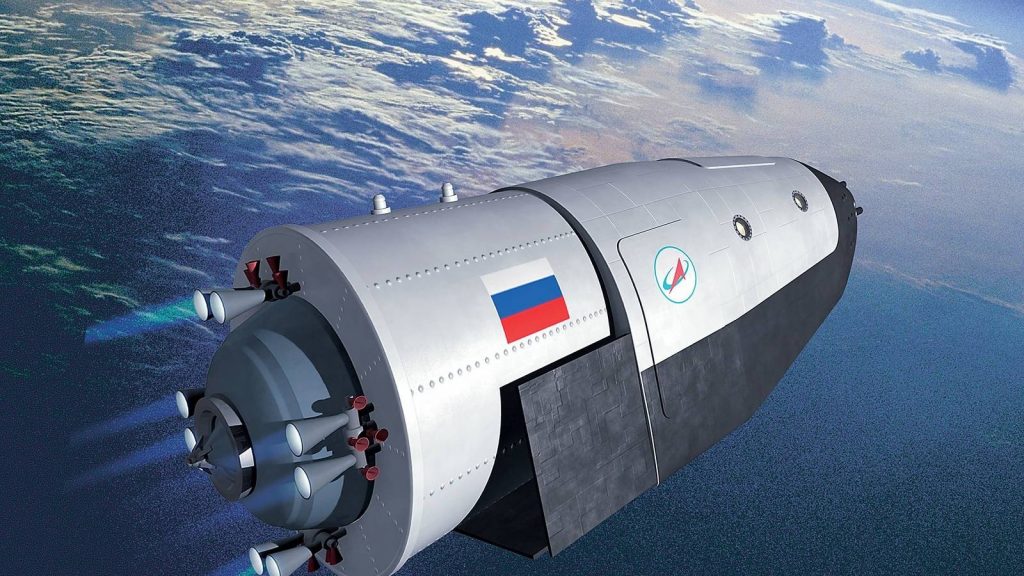In Crimea, will test the system of returning astronauts from the moon

Today it became known that Russia plans to begin testing the systems for returning astronauts from the moon. Already this year, parachutes will be tested for the domestic Federation apparatus of a new type. On this device, the Russian astronauts will fly to near-Earth orbit and the moon. Equipment inspection will be conducted at the site near Feodosia. According to experts, the parachute system must be given special attention, since one of the most dangerous stages of a space flight is precisely the return and entry into the atmosphere.
The company Technodinamika, which is part of the state corporation Rostec, reported that the testing of the parachute landing system for the new Russian manned ship Federation will begin this year. The test site is the territory near Feodosia. In this case, spacecraft (SC) mockups will be used.
“This year, tests with mock-ups weighing 3 tons will take place. They will be parachuted nine times from a Mi-8 or Ka-32 helicopter,” Igor Nasenkov, general director of Technodinamics, told Izvestia in an interview. After the tests are completed, the company's specialists will begin testing the nine-ton layout of the Federation, it is full-sized. It will be dropped from a Mi-26 helicopter and an Il-76 aircraft 28 times. This part of the tests will be held at the end of 2019.
')
The Ministry of Defense confirmed this information, but specific dates were not named.
So, initially for the landing of the "Federation" was supposed to use only jet engines. If something happens to them, reserve parachutes come into operation. Unfortunately, such a scenario requires a large supply of fuel. To reduce the weight of the spacecraft and increase the reliability of the entire system, the designers came to the conclusion that, in order to reduce the weight of the spacecraft and increase reliability, a combined system consisting of parachutes for damping speed and a soft landing engine at the Earth’s surface should be used. Such a combination is used on the Soyuz spacecraft.

Source: RIA "News"
The landing program assumes that an exhaust parachute will open at the height of 4.5 thousand meters near the Federation, followed by a three-dome main parachute with a total area of 3.6 square meters. m. At an altitude of 50 meters above the surface, jet engines will start working. They will allow the device to make a vertical landing on retractable depreciation supports. Without these supports, the Soyuz ships sometimes lay on their sides.
Engine tests for a soft landing will be carried out by the ship's developer, RSC Energia. “Testing of the landing gear is underway; this is one of the key means to ensure multiple use of the return vehicle,” the RKK said.
The scientific director of the Space Policy Institute, Ivan Moiseev, believes that the maximum attention should be paid to testing the landing system of the new spacecraft. “At one time, the lack of parachute tests led to the tragic death of the Soviet cosmonaut Vladimir Komarov. He was returning from orbit on the Soyuz-1 spacecraft. Due to the haste, the number of tests was reduced, and it was the parachute system that failed during the landing. It is necessary to remember the tragic pages of the history of space exploration, so as not to repeat them again, ”said Ivan Moiseyev. In addition, the landing stage turned out to be fatal for astronauts Vladislav Volkov, Georgiy Dobrovolsky and Viktor Patsayev, who died due to the depressurization of the descent capsule of the Soyuz-11 in 1971.
In November last year , tests began on individual elements of the Russian manned ship "Federation". As part of the SIRIUS experiment to simulate a flight around the moon, scientists and engineers tested the latest ship control systems and crew uniforms. The tests of the apparatus took place at various stages of the conditional flyby of the moon: during the conditional docking of the “spacecraft” with the upper stage in near-earth orbit, with the correction of the trajectory, the transition from circumlunar orbit to the flight path to the Earth and at the landing stage.
This year, the SIRIUS experiment (Scientific International Research in Unique Terrestrial Station, international scientific research in a unique ground complex) provides four months of isolation, the next eight months, and a 12-month period from 2020 to 2021.
Source: https://habr.com/ru/post/371223/
All Articles